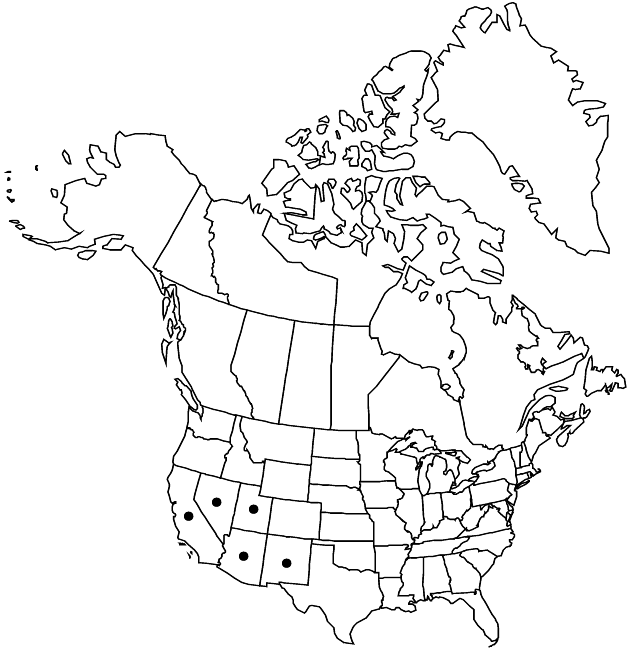Difference between revisions of "Chaenactis carphoclinia var. carphoclinia"
Illustrated
Synonyms: Chaenactis carphoclinia var. attenuata
FNA>Volume Importer |
imported>Volume Importer |
||
| (3 intermediate revisions by 2 users not shown) | |||
| Line 1: | Line 1: | ||
{{Treatment/ID | {{Treatment/ID | ||
|accepted_name=Chaenactis carphoclinia var. carphoclinia | |accepted_name=Chaenactis carphoclinia var. carphoclinia | ||
| − | |accepted_authority= | + | |accepted_authority= |
|publications= | |publications= | ||
| + | |special_status={{Treatment/ID/Special_status | ||
| + | |code=F | ||
| + | |label=Illustrated | ||
| + | }} | ||
|basionyms= | |basionyms= | ||
|synonyms={{Treatment/ID/Synonym | |synonyms={{Treatment/ID/Synonym | ||
|name=Chaenactis carphoclinia var. attenuata | |name=Chaenactis carphoclinia var. attenuata | ||
| − | |authority= | + | |authority= |
| + | |rank=variety | ||
}} | }} | ||
|hierarchy=Asteraceae;Asteraceae tribe Heliantheae;Asteraceae (tribe Heliantheae) subtribe Chaenactidinae;Chaenactis;Chaenactis sect. Acarphaea;Chaenactis carphoclinia;Chaenactis carphoclinia var. carphoclinia | |hierarchy=Asteraceae;Asteraceae tribe Heliantheae;Asteraceae (tribe Heliantheae) subtribe Chaenactidinae;Chaenactis;Chaenactis sect. Acarphaea;Chaenactis carphoclinia;Chaenactis carphoclinia var. carphoclinia | ||
| Line 22: | Line 27: | ||
|elevation=-90–1900 m | |elevation=-90–1900 m | ||
|distribution=Ariz.;Calif.;Nev.;N.Mex.;Utah;Mexico (Baja California;Sonora). | |distribution=Ariz.;Calif.;Nev.;N.Mex.;Utah;Mexico (Baja California;Sonora). | ||
| − | |discussion=<p>Variety carphoclinia is one of the most abundant spring wildflowers in the Sonoran Desert; it extends to the southern Great Basin and northwestern Chihuahuan Desert. It is reported to be eaten by desert tortoises (Gopherus agassizii Cooper). Some stunted forms have been named < | + | |discussion=<p>Variety carphoclinia is one of the most abundant spring wildflowers in the Sonoran Desert; it extends to the southern Great Basin and northwestern Chihuahuan Desert. It is reported to be eaten by desert tortoises (Gopherus agassizii Cooper). Some stunted forms have been named <i></i>var.<i> attenuata</i>; such forms recur in the most arid (or otherwise severe) habitats throughout the range of the species.</p> |
|tables= | |tables= | ||
|references= | |references= | ||
| Line 31: | Line 36: | ||
-->{{#Taxon: | -->{{#Taxon: | ||
name=Chaenactis carphoclinia var. carphoclinia | name=Chaenactis carphoclinia var. carphoclinia | ||
| − | + | |authority= | |
| − | |authority= | ||
|rank=variety | |rank=variety | ||
|parent rank=species | |parent rank=species | ||
| Line 45: | Line 49: | ||
|publication title= | |publication title= | ||
|publication year= | |publication year= | ||
| − | |special status= | + | |special status=Illustrated |
| − | |source xml=https:// | + | |source xml=https://bitbucket.org/aafc-mbb/fna-data-curation/src/2e0870ddd59836b60bcf96646a41e87ea5a5943a/coarse_grained_fna_xml/V19-20-21/V21_1013.xml |
|tribe=Asteraceae tribe Heliantheae | |tribe=Asteraceae tribe Heliantheae | ||
|subtribe=Asteraceae (tribe Heliantheae) subtribe Chaenactidinae | |subtribe=Asteraceae (tribe Heliantheae) subtribe Chaenactidinae | ||
Latest revision as of 20:07, 5 November 2020
Plants (5–)10–30(–40) cm. Leaves basal (± withering) and cauline, longest 1–6(–7) cm; petioles scarcely dilated proximally, ± herbaceous. 2n = 16.
Phenology: Flowering Jan–Jun.
Habitat: Open, rocky or gravelly (sometimes sandy) desert slopes and flats, shrublands
Elevation: -90–1900 m
Distribution

Ariz., Calif., Nev., N.Mex., Utah, Mexico (Baja California, Sonora).
Discussion
Variety carphoclinia is one of the most abundant spring wildflowers in the Sonoran Desert; it extends to the southern Great Basin and northwestern Chihuahuan Desert. It is reported to be eaten by desert tortoises (Gopherus agassizii Cooper). Some stunted forms have been named var. attenuata; such forms recur in the most arid (or otherwise severe) habitats throughout the range of the species.
Selected References
None.
Lower Taxa
None.
